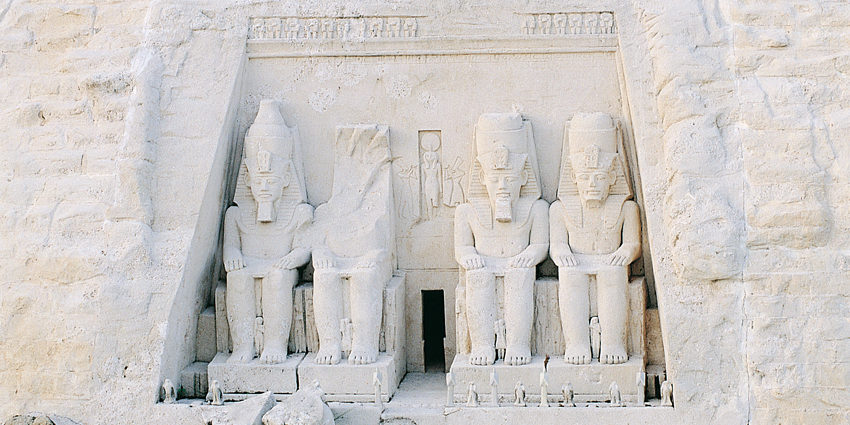Out of all the edifices in Minimundus, Abu Simbel is by far the oldest. Built in the 13th century BC by Ramses II, it disappeared beneath the sand of the Nubian desert after the fall of the advanced ancient Egyptian civilization. Rediscovered in 1812, this superhuman edifice was gradually uncovered, only to face the threat of sinking beneath the waters of the Nile in the 1960s. The river was dammed up and raised by 61 m to create the third-largest reservoir in the world to turn parts of the desert into fertile land. In a dramatic race against time, the temple was moved, section by section, to higher ground in an exemplary rescue operation, the greatest in the history of archaeology. The temple was cut apart into more than 16,000 stone blocks and reassembled perfectly with the help of gigantic cranes, with the work always driven forward by the rising waters of the Nile. The rays of the rising sun still illuminate the innermost sanctuary of the temple for a brief period twice a year on the coronation day and birthday of Ramses II (today, however, with one day delay). When building the model it would have been easy to leave on the head of one of the four colossal statues which fell off in ancient times but out of respect for the ancient gods and for fear of the “curse of the Pharaohs”, even this detail was faithfully reproduced in the model.

